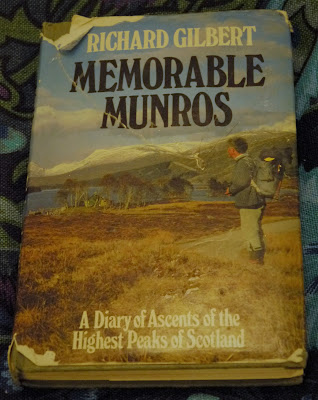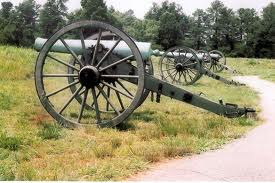Stage 5: Strathyre to Tentsmuir Point
Easy walking in easy weather: the walk ended pretty much as it began five weeks ago in Angus. Bar one slightly wet morning, there was no rain and hardly any wind for the final week. I stayed at the campsite in Strathyre for a couple of nights. I pitched by the river and lay around a lot in the sun watching the large gang of resident ducks patrolling the grass. My sister pitched up next to me for a night and we had a few beers and watched football in the Strathyre Inn.
The fine weather held. From Balquhidder Station I negotiated forestry brash then boggy moorland over to the head of Glen Ample. Beinn Each and Stuc a'Chroin followed as I walked long into the evening to a wonderful high camp by Lochan a'Chroin. The Stuc was the final big mountain of the trip. Familiar landmarks were spread out below: Dumyat, Longannet power station, the Forth estuary, the Campsies. On this last day in the mountains the wildlife continued to thrill: a ring ouzel, and fox cubs amongst a jumble of boulders.
Fully extricating myself from the hills took a couple more days. I crossed miles of moorland and bog, traversing Uamh Bheag. I wondered at the meaning of this hill's name: 'little cave'. Perhaps it refers to the springs that well up on its northern flanks. The spot is marked by an old cairn, the water clear, cold and delicious.
The springs overlooked the massive Braes of Doune wind power plant. This sits on deep peat moorland. The peat hags are enormous around here, canyons of black mud. How much CO2 was released from this carbon sink during construction of the wind farm, excavating access roads and digging turbine foundations? These moors still hold much beauty and remoteness despite industrialisation. I had a magnificent wild camp just out of earshot of the turbines.
The following morning I wandered down a heathery birch-lined glen, avoiding a military firing range on the hills to the north, to the high road to Braco. The moor opposite was full of curlew calls, and a barn owl flapped out of the grass. The crest gave a few kilometres of intensely heavy going through some nasty bogs. The hill sported the last full-on Gaelic name on my route: Meall a'Choire Odhair, 'hill of the rough hollow'. A typically accurate no-nonsense description.
At last, after a second meeting with the monster pylons of the Beauly-Denny power line, built to carry wind-generated power out of the highlands, I entered a forestry plantation. I emerged onto a rural back road that ran by fields of cattle and broadleaf woods. I was back in the lowlands. As I tramped the miles to Auchterarder on roads and tracks I began to get the feeling I'd come full circle.
The Ochils gave one last hill day and wild camp near the head of Dunning Glen. Eastwards the hills are drowned in conifers. I picked a way through, following the watershed over Slungie Hill and Heads Hill, and stopped in Glenfarg for the night. I was getting tired, slowing up. Another shortish day took me through Pitmedden Forest to Newburgh. These were Pictish lands, Roman frontier country. Mugdrum Island lies off Newburgh and some speculate it was used by the Romans to bridge the Tay.
Roads tended to run north-south in this area, so sometimes I had to force my way east. I ended up in some awkward places including an off-road driving centre. There was also a dearth of campsites both formal and wild. Each day involved a search for a cheap bed and breakfast - these were hard to find too.
It was time to pick up the pace. Next day I followed the Fife Coastal Path through the hills and woods of northeast Fife and down to the Tay at Balmerino. This part of Fife is deeply rural. I could sense something ancient and unshakable in the slow ruminations of cattle chewing the cud and the gravelly potholes of tiny back roads. Rusty vintage tractors littered one overgrown field; cockerels did endless call-and-response across another.
The end had to come eventually. I walked the last few miles in the morning, along the coast through Tayport and into Tentsmuir Forest. A little gate opened onto the dunes. Skylarks soared and the sun broke through as I came to a stop where gentle waves washed the sand.
There were no great epiphanies or overwhelming emotions at the end. There was the quiet satisfaction of seeing the venture through good and bad to the end. There was also the sense that if the experience had changed me in any way, these changes would play out slowly and subtly, at unpredictable times and unexpected ways.
So it's done but not quite dusted - I have thoughts and reflections and plenty of photos to share still. If you haven't done so, now would also be a good time to throw in a few pennies for Venture Trust and Scottish Wild Land Group - visit the fundraising page on this blog.
The fine weather held. From Balquhidder Station I negotiated forestry brash then boggy moorland over to the head of Glen Ample. Beinn Each and Stuc a'Chroin followed as I walked long into the evening to a wonderful high camp by Lochan a'Chroin. The Stuc was the final big mountain of the trip. Familiar landmarks were spread out below: Dumyat, Longannet power station, the Forth estuary, the Campsies. On this last day in the mountains the wildlife continued to thrill: a ring ouzel, and fox cubs amongst a jumble of boulders.
Fully extricating myself from the hills took a couple more days. I crossed miles of moorland and bog, traversing Uamh Bheag. I wondered at the meaning of this hill's name: 'little cave'. Perhaps it refers to the springs that well up on its northern flanks. The spot is marked by an old cairn, the water clear, cold and delicious.
The springs overlooked the massive Braes of Doune wind power plant. This sits on deep peat moorland. The peat hags are enormous around here, canyons of black mud. How much CO2 was released from this carbon sink during construction of the wind farm, excavating access roads and digging turbine foundations? These moors still hold much beauty and remoteness despite industrialisation. I had a magnificent wild camp just out of earshot of the turbines.
The following morning I wandered down a heathery birch-lined glen, avoiding a military firing range on the hills to the north, to the high road to Braco. The moor opposite was full of curlew calls, and a barn owl flapped out of the grass. The crest gave a few kilometres of intensely heavy going through some nasty bogs. The hill sported the last full-on Gaelic name on my route: Meall a'Choire Odhair, 'hill of the rough hollow'. A typically accurate no-nonsense description.
At last, after a second meeting with the monster pylons of the Beauly-Denny power line, built to carry wind-generated power out of the highlands, I entered a forestry plantation. I emerged onto a rural back road that ran by fields of cattle and broadleaf woods. I was back in the lowlands. As I tramped the miles to Auchterarder on roads and tracks I began to get the feeling I'd come full circle.
The Ochils gave one last hill day and wild camp near the head of Dunning Glen. Eastwards the hills are drowned in conifers. I picked a way through, following the watershed over Slungie Hill and Heads Hill, and stopped in Glenfarg for the night. I was getting tired, slowing up. Another shortish day took me through Pitmedden Forest to Newburgh. These were Pictish lands, Roman frontier country. Mugdrum Island lies off Newburgh and some speculate it was used by the Romans to bridge the Tay.
Roads tended to run north-south in this area, so sometimes I had to force my way east. I ended up in some awkward places including an off-road driving centre. There was also a dearth of campsites both formal and wild. Each day involved a search for a cheap bed and breakfast - these were hard to find too.
It was time to pick up the pace. Next day I followed the Fife Coastal Path through the hills and woods of northeast Fife and down to the Tay at Balmerino. This part of Fife is deeply rural. I could sense something ancient and unshakable in the slow ruminations of cattle chewing the cud and the gravelly potholes of tiny back roads. Rusty vintage tractors littered one overgrown field; cockerels did endless call-and-response across another.
The end had to come eventually. I walked the last few miles in the morning, along the coast through Tayport and into Tentsmuir Forest. A little gate opened onto the dunes. Skylarks soared and the sun broke through as I came to a stop where gentle waves washed the sand.
There were no great epiphanies or overwhelming emotions at the end. There was the quiet satisfaction of seeing the venture through good and bad to the end. There was also the sense that if the experience had changed me in any way, these changes would play out slowly and subtly, at unpredictable times and unexpected ways.
So it's done but not quite dusted - I have thoughts and reflections and plenty of photos to share still. If you haven't done so, now would also be a good time to throw in a few pennies for Venture Trust and Scottish Wild Land Group - visit the fundraising page on this blog.


Comments
Post a Comment